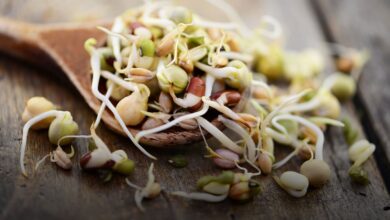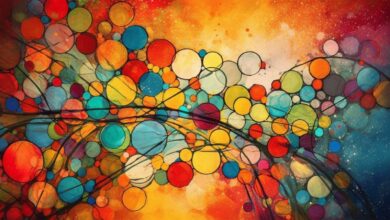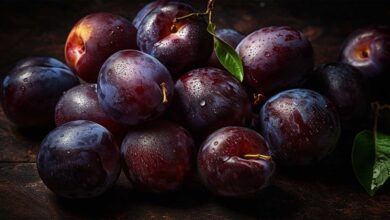Essential anti-aging plants

Preventing the effects of aging and reducing the risks of premature aging, both physical and psychological, are goals that can be achieved thanks to the riches offered by nature, and in particular thanks to the many medicinal plants known to herbalists, both yesterday and today.
The discovery of natural substances capable of preventing aging and enhancing vitality has always been an important concern in human history.
In one of the oldest and most famous works of traditional Chinese medicine, Shen Nung Bin Cao Jing, attributed to Emperor Shennong (2800 BC), we find a list of plants and mushrooms described as “super tonics.”
These precious treatments are able to increase energy, strengthen the body's resistance and prolong its life.
Today, we talk rather about adaptogenic plants to designate plants capable of enhancing the body's resistance to chronic stress situations in a non-specific way while modulating the activity of the endocrine and immune systems. In this category we find the best anti-aging plants. Here are some examples:
Ginseng
Ginseng (Panax ginseng meyer), also known as ren shen, is probably the most popular herb in the traditional Chinese pharmacopoeia. Its holographic root has been used for thousands of years to restore the five vital organs, calm the mind, clarify vision, strengthen the vessels of the heart, and free thoughts…
Its regular consumption strengthens the body and contributes to longevity. In the West, ginseng root is incorrectly considered a stimulant. When grown traditionally and used whole (body and root), it has soothing and tonic properties for the nervous system.
It is especially suitable for the elderly and can be recommended in cases of general weakness, insomnia, hair loss, memory loss, loss of libido, menopausal disorders, weak immune system and protection of cardiovascular function.
Astragalus
Like ginseng, Astragalus membranaceus is one of the greatest tonics in the traditional Chinese pharmacopoeia. Known as “huang qi” (“yellow energy”), this perennial plant is native to northern China and Mongolia, and is especially prized for its immune-regulating effect.
Many studies have confirmed that its main components, namely polysaccharides (astragalan) and saponosides (astragaloside), can increase the number of stem cells in the bone marrow and lymphatic tissue, stimulate macrophages and strengthen the immunoglobulin (Ig A) in the body's mucosal immune system. Recently, a study suggested that astragaloside IV-rich astragalus extract may enhance telomerase activity.
Telomeres, from the Greek telos (“end”) and meros (“part”), are a kind of cap that protects the ends of chromosomes from the risk of losing information.
However, with each cell division, telomere sequences shorten to a critical size that causes the cell to enter senescence. Telomerase is an enzyme that can reverse the process of telomere degradation and delay cell aging.
Epidemiological studies have confirmed that short telomeres are risk factors for atherosclerosis, diabetes, metabolic syndrome, and even neurological diseases such as Alzheimer's disease. Furthermore, chronic stress has a negative effect on telomere length by reducing telomerase activity…hence the interest in adaptogenic plants such as astragalus.
feathery
Reishi (Ganoderma lucidum), known in traditional Chinese medicine as Ling Jie, is a woody mushroom known for thousands of years for its ability to slow the aging process, hence the nickname “mushroom of immortality” or “long-lived mushroom.” It is used by Taoist monks to enhance practices of inner calm and meditation, and is undoubtedly the most widely regarded of the “supreme tonics.”
Many scientific studies have identified a large number of compounds such as polysaccharides (ganoderan and beta-glucan) and triterpenes (ganoderic and ganoderenic acids), which are largely responsible for its antioxidant, anti-inflammatory and immunomodulatory properties.
Today, reishi is recommended to strengthen the immune system, especially for patients undergoing chemotherapy. It is a great anti-aging treatment because it can increase bone regeneration, relieve joint pain, reduce cholesterol levels, improve adrenal function, regulate blood sugar levels, lower blood pressure, increase blood pressure, and provide the body with energy by improving cellular respiration in the mitochondria. .
Pink stone, or rhodiola
Rhodiola rosea, a plant belonging to the genus Sedum, is a perennial plant native to the polar regions of Asia, Europe and North America, but found wild in the rocky rocks and glacial moraines of the Alps or Pyrenees. Viking legend says that a man who regularly consumed rhodiola would be able to live strong and powerful for approximately 200 years.
The diversity of its components (more than seven groups of chemical compounds) and the abundance of positive clinical observations allow us to confirm that Rhodiola rosea roots constitute a preferred remedy for maintaining one's general health, improving one's resistance to stress and strengthening the activity of the immune system. In addition to its antioxidant effect, Rhodiola can be seen to improve oxygen utilization in cellular respiratory chains. This power is considered a key asset in the anti-aging plant standards. Mahtab Jafari, a researcher at the University of Irvine in California, succeeded in extending the life expectancy of fruit flies by 25% using Rhodiola rosea extracts.(1).
Besides these exceptional nutrients, other botanicals from ancient remedies or long-lasting elixirs deserve re-evaluation.
Ginkgo
Considered by some authors to be a true living fossil, the ginkgo (Ginkgo biloba), or “tree of longevity,” is a descendant of some trees that were once planted in the gardens of Chinese and Japanese emperors.
Its unique composition of flavonoids and especially ginkgolides, with powerful antioxidant properties, could be the origin of its exceptional longevity and amazing resistance to parasitic fungi, as well as to air pollution.
Ginkgo biloba is known for its stimulating effect on blood circulation, especially in the brain, but it has many other properties. It improves the utilization of glucose, oxygen and mitochondrial ATP. It can prevent eye aging and reduce hearing loss and tinnitus. It fights erectile dysfunction associated with poor blood circulation. It improves resistance to stress and protects the nervous system thanks to its neuroprotective activity.
Rosemary
Rosmarinus officinalis: Fountain of Youth. This typical Mediterranean shrub, which blooms almost all year round, symbolizes eternal youth. Known in ancient times to stimulate memory and concentration, it has also been widely used throughout the ages to treat physical and intellectual exhaustion. It is part of the famous “Queen of Hungary's Water” formula, which is considered a true elixir of youth.
An in-depth study of its components reveals the presence of many compounds with antioxidant effects such as carnosol, urolic and oleanic acids, in addition to many flavonoids. This antioxidant activity, its tonic action on the heart and brain, as well as its stimulating effect on liver detoxifying enzymes, elevates rosemary to the rank of the best anti-aging plant in the European Pharmacopoeia.
The last word
An ideal plant capable of reaching a hundred-year lifespan has the following qualities: maintaining connective tissue integrity, protecting mitochondria from oxidative stress, promoting hormonal balance, reducing chronic inflammation, combating the effects of chronic stress, delaying brain aging, and maintaining the intestinal ecosystem.
To safely benefit from the anti-aging virtues of these health treasures, it is advisable to follow the recommendations of a professional herbalist who will know how to best choose the plant(s) according to age, gender and nature. Duration of treatment to be distributed throughout the year and choose the most suitable dosage form (herbal teas, tablets, standard extracts, etc.).
Essential anti-aging plants


